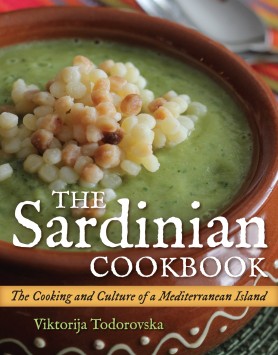The New Filipino KitchenStories and Recipes from around the Globe
Photographs by Rowena Dumlao-Giardina
You may not realize that Filipino Americans are the second-largest Asian American group living in the United States, especially when you compare the number of, say, Japanese, Thai, and Korean restaurants to Filipino ones. There’s a lot of speculation about why Filipino food hasn’t taken off the way other Asian cuisines have, but one thing’s for sure: there’s something for everyone here.Lauded as the next big thing by the likes of Anthony Bourdain and Jonathan Gold, Filipino food can be somewhat difficult to define, as it melds indigenous dishes with myriad foreign influences from Chinese and Spanish to Japanese and even American. And as Filipinos have left their archipelago and set down roots all over the world, it has proven to be a highly adaptable cuisine, lending itself to different diets, preferences, and ingredients.
The New Filipino Kitchen collects 30 recipes and stories from expat Filipinos, all of whom have taken their favorite dishes with them, preserving their food memories and, if necessary, tweaking their recipes to work in a new environment or, in the case of some chefs, a more modern context. With contributions from White House executive chef Cristeta Comerford, silver Bocuse d’Or winner Christian André Pettersen, five-time Palanca Award winner and poet Francis Macansantos, and the “Food Buddha” Rodelio Aglibot, this is a multifaceted, nuanced introduction to the world of Filipino food and food culture.
Jacqueline Chio-Lauri has more than eight years’ experience in the food industry opening and managing restaurants at deluxe hotels, such as Shangri-La and Sheraton. While working in Dubai, she was one of the five young women professionals featured in Emirates Woman magazine’s special report “Why the Future Is Female.”
Her writing has appeared in anthologies and compilations such as Chicken Soup for the Soul: Find Your Inner Strength and Tales of Our Lives: Fork in the Road. Her website, My Food Beginnings, was created to fire up an appetite for Filipino food worldwide. The New Filipino Kitchen, her first book, won the Sunshot Prose 2017 Finalist Prize before it was published. She currently lives in Norway, her sixth country of residence.
“Contributors’ entrancing essays about work, life, and love of their heritage are not to be missed . . . . A gentle, inspiring, and exciting introduction to a savory world still new to many U.S. readers.” —Booklist, starred review
“Remembrances of kitchens past are paired with ideas for tomorrow’s dinner in this sentimental exploration of a wildly diverse cuisine.” —Publishers Weekly
“An engrossing, page-turner of a cookbook. If you can even call it a cookbook—it’s more of a short story collection with delicious, addictive recipes. You can find everything that makes food so special: the connection between family and the dinner table, tradition and innovation, and preserving cultural identity in a world that’s increasingly homogenized. It makes me hungry.” —Brian McGinn, Emmy-nominated director and executive producer, Chef’s Table
“A wonderful multilayered answer to the question ‘What is Filipino food?’ and an invitation to everyone to get cooking.” —Naomi Duguid, author of James Beard Award–winning Taste of Persia
“Brilliant! Chio-Lauri has captured the diversity of the country and cuisine in an elegant, visually beautiful, yet relaxed style.” —Chris Dwyer, food and luxury travel writer for CNN, BBC, and other global media
“Beautifully written for anyone who loves a good tale and good food.” —Dianne Jacob, author of Will Write for Food
“You don’t have to be Filipino to appreciate what these writers discover about their native cuisine and, in turn, themselves.” —Janet Rausa Fuller, two-time James Beard Journalism Award finalist
“This must-have cookbook combines reminiscences and recipes that open new ways of preparing foods.” —Matilda Butler, editor of Memories Sweet and Savory and the award-winning Seasons of Our Lives
“I love this book! I want to meet every person in it! I want to make every dish by every person in it!” —Ina Yalof, author of Food and the City: New York’s Professional Chefs, Restaurateurs, Line Cooks, Street Vendors, and Purveyors Talk About What They Do and Why They Do It
“A moving and mouthwatering tribute to one of today’s most popular cuisines.” —Alexis Williams Carr, editor and publisher, New Millennium Writings
“While food fills the stomach, it’s the stories that nourish the soul. This book is spot-on.” —Claude Tayag, food writer, chef, and host of Chasing Flavors
“An amazing anthology of dishes that will suit any occasion and certainly have your guests cheering.” —Cathal Armstrong, award-winning chef, restaurateur, and author of My Irish Table
PANSIT MOLO (Meat and Shrimp Dumpling Soup with Shiitake Mushrooms)
SPAGHETTI SAUCE CHICKEN AFRITADA
![]()
PANSIT MOLO (Meat and Shrimp Dumpling Soup with Shiitake Mushrooms)
This isn’t the only way to prepare pansit molo, and this recipe intentionally does not dictate how much seasoning one should use, the exact method of preparation, or the precise results. Cooking is a deeply personal thing and we should treat it as such. Want to use chicken instead of pork? Do it. Prefer to make your own stock? Go for it! Lucky and skilled enough to use heritage Kurobuta pork and handmade wrappers in a tomato consommé topped with calamansi foam? Awesome!
PREPARATION TIME: 1 hour
YIELD: 3–4 servings
4 cups vegetable broth or water
8 (or more) dried shiitake mushrooms
½ pound shrimp, peeled, deveined, and finely chopped (see Note)
½ pound ground pork, preferably 80:20 fat ratio
½ head garlic, minced
1 medium shallot, minced
1 handful fresh chives, finely chopped
½ (8-ounce) can water chestnuts, drained and finely chopped (optional)
1 large egg, lightly beaten
2 tablespoons kosher salt, soy sauce, fish sauce, or bagoong alamang, or to taste
1 (12-ounce) package wonton wrappers, thawed if frozen
1 package Chinese soup herb mix (see Note; optional)
Chopped scallions, for garnish
Soy sauce and calamansi (or other citrus) juice, for serving
Combine the vegetable broth and mushrooms in a saucepan. Bring the mixture to a simmer over medium-low heat. Reduce the heat to low, cover, and leave to simmer while you prepare the dumplings.
In a large bowl, combine the shrimp, pork, garlic, shallot, chives, water chestnuts (if using), and egg lightly by hand, taking care not to turn the mixture mushy. Add the salt. (You can use as much or as little salt as you want since you can set aside a small amount of it for dipping later, should your dumplings turn out too bland.)
Place a wonton wrapper on a clean work surface so that it looks like a diamond. Cover the rest of the wrappers with a damp cloth to keep them from drying out. Place about 1 teaspoon of the filling mixture in the center of the wonton wrapper. Fold the bottom corner up and over the mixture, covering it. Using fingers moistened in water, fold the left and right corners over to seal the dumpling. The result should be a dumpling with no meat showing and the top corner poking straight up like a nun’s headdress. Repeat this process until you’ve used all the filling.
Stir the Chinese soup herbs, if using, into the simmering broth. Working in batches, add the dumplings to the broth, without crowding, and cook for 3 to 5 minutes, until they float. Check one by cutting it open. If the meat filling no longer looks raw, remove the dumplings with a slotted ladle and distribute into soup bowls. If the filling is not cooked through, simmer for another minute. Repeat this process with the remaining dumplings.
Taste and season the broth as needed. Remove and discard the Chinese herbs. Ladle the broth over the dumplings in the bowls. Distribute the shiitake in the bowls, garnish with chopped scallions, and serve with a few squirts of soy sauce and calamansi juice.
NOTE: If your shrimp have their shells and heads on, remove them and put them in with the mushrooms to add flavor to the broth. Before adding the dumplings to the broth, squeeze the liquid out of the shrimp heads and shells before removing and discarding them.
Packaged Chinese soup herb mixes containing ingredients such as wolfberry fruit, jujubes, and lovage rhizome are available at Asian groceries, usually in the spice/powdered soups/tea aisle, at traditional Chinese medicine shops, or online.
![]()
SPAGHETTI SAUCE CHICKEN AFRITADA
Afritada, a traditional chicken and vegetable stew, is a gateway dish to Filipino cuisine. It’s a great one to prepare when someone isn’t familiar with traditional Filipino food because the core ingredients are classic flavors in almost every place in the world. It opens up the eater’s mind to the possibility of what else Filipino food may have to offer. Spaghetti sauce, instead of fresh tomatoes or tomato sauce, is used in this recipe for convenience and taste.
PREPARATION TIME: 1 hour
YIELD: 6–8 servings
¼ cup vegetable oil
6 cloves garlic, finely chopped
2 medium onions, halved and sliced into thin half-moons
4 pounds bone-in, skinless chicken pieces
3 large potatoes, peeled, halved lengthwise, and quartered crosswise
2 large carrots, coarsely chopped
2 cups unsalted chicken broth or water
1 (24-ounce) jar spaghetti sauce
½ cup soy sauce
2 teaspoons granulated sugar
1 teaspoon freshly ground black pepper
2 small bay leaves
2 red bell peppers, seeded and sliced into strips
1 green bell pepper, seeded and sliced into strips
2 tablespoons fish sauce, for serving (optional)
6–8 cups cooked white rice, for serving
In a large stockpot, heat the oil over medium-high heat. Add the garlic and onions and cook for 3 minutes, until the onions are soft.
Add the chicken pieces and cook for 3 to 5 minutes, turning occasionally, until the chicken is no longer raw on the outside.
Stir in the potatoes, carrots, chicken broth, spaghetti sauce, soy sauce, sugar, black pepper, and bay leaves. Stir well and bring the mixture to a boil. Reduce the heat to medium and cook, uncovered, for 20 minutes.
Add the bell peppers. Continue cooking for another 15 to 20 minutes, until the potatoes are fork tender.
Remove the afritada from the heat. Stir in the fish sauce, if using, and serve hot with the rice.
Reprinted with permission from The New Filipino Kitchen edited by Jacqueline Chio-Lauri, Agate Surrey, 2018











Leave a Reply